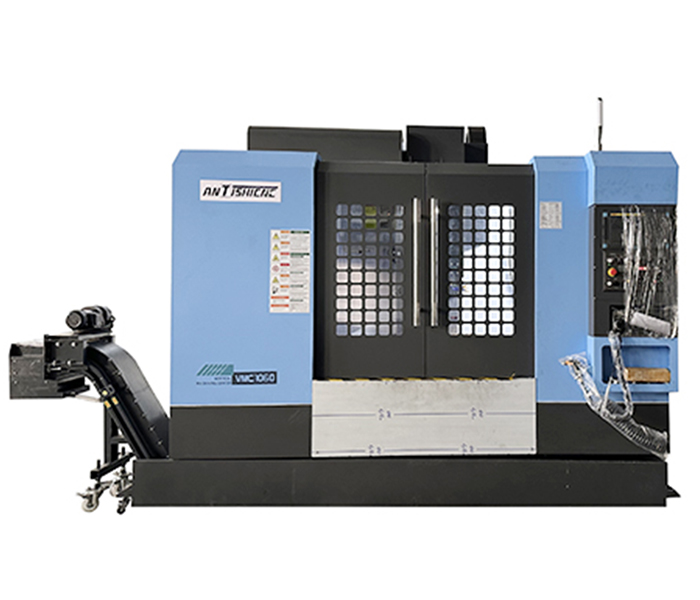
How does superstring finishing technology improve finishing efficiency?
The purpose of CNC finishing is to ensure the final dimensional accuracy and surface quality of the workpiece. The surface quality of finishing depends largely on the height of the residual ridge left after processing.
The height of the residual ridge refers to the maximum height of the convex part of the residual material after the tool passes through two adjacent tool paths during processing, as shown in the figure below.
How to reduce the height of the residual ridge?
A feasible method is to reduce the step distance and reduce the distance between adjacent toolpaths. But this means that the number and density of tool paths per unit area are increased, and the time for finishing is increased.
Another feasible method is to use a larger tool. Because the larger the tool radius, the greater the arc at the contact point when it comes into contact with the material. Under the same toolpath density, the height of the residual ridge obtained is about small. Using a tool with a large radius can reduce the height of the residual ridge and achieve a better surface quality. However, many workpieces need to be finished, and the gap is narrow and cannot be processed with a large radius tool.
Large arc cutter and super string finishing technology
The large arc cutter is a new type of milling cutter. Using a large arc tool can achieve the same surface quality with a larger step. Tool path programming is the key to the effective use of large arc tools. Controlling the tool in the tool path to accurately fit the contour of the workpiece at an appropriate angle can greatly reduce the processing cycle time while ensuring the surface quality. This is Mastercam’s Super string finishing technology.
Comparison of machining with ball cutters and large arc cutters
The advantage of the ball knife is that there is no need to consider the engagement angle between the shape of the tool tip and the surface shape of the workpiece when used. No matter which angle is used, the shape of the contact point of the tool tip is always circular. However, the ball cutter requires a small step increment to ensure the quality of the finished surface. When the processed surface is large, the processing time will become very long.
By using a much larger tip arc than a ball knife, that is, using a taper or elliptical tool, the height of the residual ridge can be reduced without increasing the density of the tool path, and the quality can be improved in less time. High finishing.
What programming strategy should be used in superstring finishing?
Mastercam’s superstring finishing technology is a programming solution for efficient finishing using circular arc tools. It can dynamically compensate the tool contact points in the machining process based on the shape of the tool and through a special tool path algorithm for large arc tools of various shapes, and can make full use of the shape of the arc tool to perform high-precision and high-efficiency finishing.
If you want to use a large arc tool for finishing with superstring finishing, what kind of tool path strategy should you choose for programming?
3-axis machining:
In ordinary 3-axis machining, because the machine axis movement is simple, super chord finishing can be used to finish some side walls and steep areas or flat areas on the top surface. It is recommended to choose circular arc cutters in the form of barrels and tapers, and use the contour and parallel strategies in Mastercam 3D finishing for superstring finishing.
3+2 fixed surface processing
For superstring finishing in a 3+2 fixed surface environment, it is also recommended to use the contour and parallel strategy. Different from simple 3-axis machining, in 3+2 fixed surface machining, it is necessary to select a suitable tool plane so that the arc of the tool contacts the material at a stable tangent point in the tool path.
Five-axis simultaneous machining
The five-axis linkage machining machine tool has flexible movement angles and is the main application field of superstring finishing. In five-axis machining, parallel and gradual machining strategies are recommended.
The key point of superstring finishing with five-axis linkage is to control the tool axis so that the tool contacts the material at a stable and appropriate arc tangent point. Superstring finishing is suitable for 3-axis machining, 3+2 axis fixed surface machining, and five-axis simultaneous machining.
It is recommended to use contour, strategy and parallel and strategy in 3-axis machining.
The key point of 3+2 axis machining is to select a suitable tool plane so that the arc of the tool contacts the material at a stable tangent point in the tool path.
The key point of five-axis simultaneous machining is to control the tool axis so that the tool contacts the material at a stable and appropriate arc tangent point. Parallel and gradual processing strategies are recommended for 5-axis simultaneous machining.


